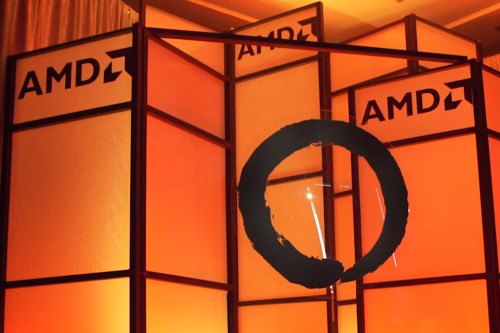
The benchmarks stem from Geekbench 4, and reveals that the motherboard is code-named as “AMD Corporation Diesel” packing the American Megatrands 5.12 BIOS and 128GB of system memory. The processor itself is listed as engineering sample “2S1451A4VIHE4_29/14_N.” This platform was shoved into a system using Ubuntu 16.04 LTS, and scored 1,141 in a single-core test and a 15,620 in a multi-core test.
According to the benchmarks, the single-core performance managed 8.72 megapixels per second processing JPEGs, 5.23 megapixels per second processing HDR images, and 11.2 words per second in a speech recognition test. On the multi-core performance side, the test reveals 356.4 megapixels per second when processing JPEGs, 137.6 megapixels per second when processing HDR images, and 112.3 words per second in the speech recognition test.
As previously reported, each Zen core will have two threads (lanes), thus a dual-processor setup will not only have 64 cores, but 128 threads as well. And due to the design of AMD’s Zen core technology, each Zen-based server processor can handle up to 64MB of L3 cache, which is essentially a storage unit for preloaded bits of data the processor will need to use next. Naturally the more you can pack into a processor, the better.
Wccftech provides a chart showing that AMD’s Zen-based Naples platform will compete with Intel’s Xeon E7-8800/4800 V5 and Xeon E5-2600/4600 V5 platforms. The maximum core/thread counts will be 28/56 and 26/52 respectively, and the maximum L3 cache will be 70MB and 65MB, respectively. Both Intel products will support 6-channel DDR4 system memory while AMD’s Naples platform (thus far) will only support 4-channel DDR4 memory.
As for how much power these processors will consume, AMD’s Naples platform may range between 125 and 150 watts. By comparison, the Xeon E7-8800/4800 V5 model will range from 110 to 160 watts and the Xeon E5-2600/4600 V5 will range from 45 to 160 watts.
Given these benchmarks are based on an engineering sample, numbers will likely change before the final products hit the market. These will arrive in Q2 2017, following the release of AMD’s Zen-based “Summit Ridge” high-performance desktop processors for the enthusiast (read: PC gamer) market. The company also plans to launch a Naples processor for dual-socket workstations, and eventually processors based on “Zen+” core technology and the 7nm manufacturing process.
AMD is also expected to produce its next generation of HPC server chips based on its Zen processor core technology alongside the company’s upcoming next-generation “Vega” graphics core architecture, which will replace the current graphics cards based on its “Polaris” architecture. Vega will be based on 14nm process technology that uses FinFET “3D” transistors, “stacked” HBM2 video memory, and will consist of 15 billion to 18 billion transistors. Yeah, that’s crazy, we know.
Editors' Recommendations
- CES 2023: AMD Ryzen 7000 laptops CPUs go up to 16 cores
- AMD’s best GPU is up to $1,000 cheaper than it was a few months ago
- AMD fans, ready up — Ryzen 7000 could be coming soon
- AMD’s new powerful server processor leaked, including pictures and an X-ray
- AMD previews Ryzen 7000 Zen 4 processors with Halo Infinite tease